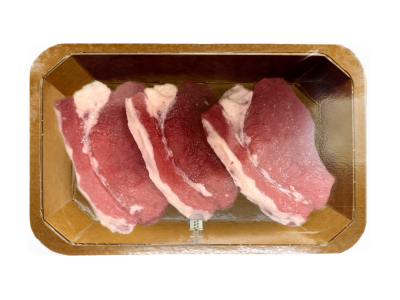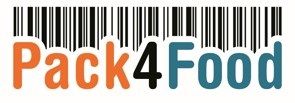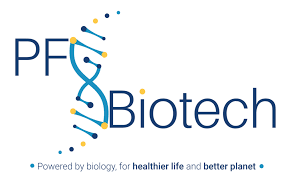Fibre-based food packaging can be equipped with freshness sensor to track spoilage | 25-11-2025 |

Solidus, a producer of sustainable, fibre-based packaging solutions, and UK-based technology company BlakBear- both longstanding AIPIA members - are joining forces to explore the future of smart packaging, they say. The partners are combining Solidus’ expertise in fully recyclable fibre-based packaging with BlakBear’s wireless freshness sensors to demonstrate how innovation can transform food safety, shelf life and combat food waste.
BlakBear’s technology uses miniature sensors placed inside food packaging to monitor freshness in real time. These sensors measure gases released as food spoils, such as volatile compounds like ammonia, as well as the temperature.
The data is transmitted wirelessly via Bluetooth and RFID, and displayed on a web dashboard or API. By correlating spoilage gases with bacterial growth and odour, BlakBear’s AI delivers real-time microbiology insights and shelf-life forecasts. Then, by integrating these sensors into Solidus packaging, the partners aim to explore how smart data can enhance packaging performance and value, while contributing to more sustainable food systems.
“Traditional expiry dates are chosen to cover a worst-case scenario, based on simulated storage conditions,” says Max Grell, CEO of BlakBear. “Our sensors track actual biochemical changes, not time. That means shelf life becomes dynamic and based on reality, not assumptions.”
It is estimated that between 5-10% of fresh food is wasted every day in grocery stores, with even higher losses in households. Because expiry dates are static and conservative, much of this food is still safe to eat. With real-time freshness data, food can communicate how fresh it really is. Even a single additional day of shelf life can already have a significant impact on waste reduction in retail. This project demonstrates how digitalisation and sustainable packaging can work together to reduce waste and improve food safety. Every pack of food is different and reacts uniquely to temperature fluctuations.
Printed expiry dates could be replaced by digital freshness indicators in future, although this has been mooted for some time, says AIPIA. A hybrid model that combines printed dates with dynamic sensor data is already an important step towards this transition, enabling safer and more efficient food distribution. Some examples already exist, such as the Mimica Bump, according to AIPIA.
However combining smart sensors with Solidus’ recyclable, fibre-based packaging not only helps fight food waste, it further strengthens sustainability goals, it says. Across Europe, around 85% of fibre-based packaging is collected for recycling, roughly twice as much as plastic, it is claimed.
With recycled fibre content often exceeding 90%, and sourced from renewable, certified materials, the environmental footprint is significantly lower. Packaging can represent up to 20% of a product’s Scope 3 emissions, making this an important area for improvement, Solidus states.
With BlakBear, producers and retailers can monitor freshness inside the Solidus packaging and take corrective action immediately, rerouting shipments, optimising cold chains, or reducing unnecessary lab testing. Real-time insights allow faster, data-driven decisions and more resilient supply chains, according to the company.
This early-stage collaboration is an important step in changing industry standards, the partners believe. It requires input and trust from all stakeholders, technical, regulatory and commercial, to shape a more sustainable food future, they say..
































